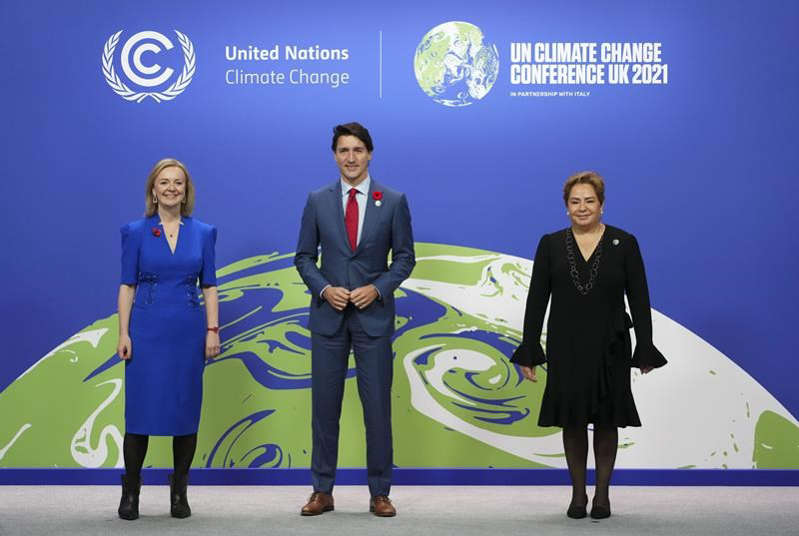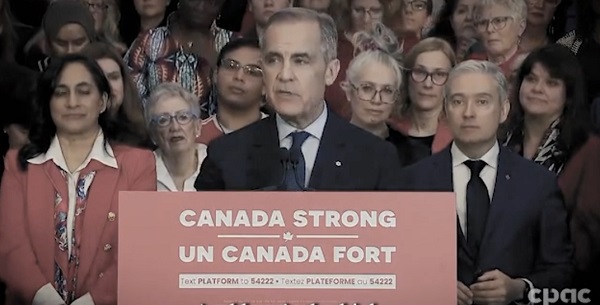Alberta
Ottawa’s emissions policies will impose huge costs on Albertans

From the Fraser Institute
By Tegan Hill and Elmira Aliakbari
The path Trudeau is forcing us down leads to a much poorer economy (completely cratering Canada’s energy industry while making everything more expensive) and negative environmental benefit (that’s right, it’s worse as developing nations use the energy that’s cheapest). So maybe it’s time to scrap the tax.
The federal NDP recently ended its support for the consumer carbon tax citing its significant cost to everyday Canadians. But Canada’s costly climate change policies extend beyond the carbon tax. Indeed, the Trudeau government has introduced numerous policies in an attempt to reduce greenhouse gas (GHG) emissions, which impose major costs on Albertans.
The consumer carbon tax is perhaps the most widely known GHG reduction policy, which places a price on carbon (currently at $80 per tonne) and is set to rise to $170 per tonne by 2030. However, the Trudeau government has also imposed other regulations and mandates, including clean fuel regulations, electric vehicle mandates, the phase-out of coal-based electrical generation and building efficiency mandates.
The costs? According to a recent study, these GHG policies will shrink the Alberta economy (as measured by GDP) by an estimated 6.0 per cent by 2030. And employment in the province is expected to decline by 0.9 per cent. To put these figures into perspective, a 6.0 per cent contraction in 2024 would have shrunk the provincial economy by $27.7 billion, while a 0.9 per cent decrease in employment would have meant a loss of approximately 22,837 jobs (based on data for August 2024).
While these policies are expected to reduce GHG emissions, they fall short of meeting the government’s national GHG reduction targets. As a result, further economic pain will be required if the federal government implements additional measures to further reduce GHGs emissions.
These findings echo other studies that measure the effects of various climate change policies. According to a report by Deloitte, for instance, Trudeau’s policy to cap GHG emissions in the oil and gas sector (to 35 to 38 per cent below 2019 levels by 2030) will lead to less investment, nearly 70,000 fewer jobs, and a 4.5 per cent decrease in economic output (i.e. GDP) among the provinces by 2040. Unsurprisingly, Alberta is projected to be the hardest hit province.
And here’s the kicker—these huge economic costs come with little to no actual environmental benefit. Even if Canada shut down its entire oil and gas sector by 2030, thus eliminating all GHG emissions from the sector, the resulting reduction would equal four-tenths of 1 per cent of global emissions, which would have an undetectable impact on the climate. Meanwhile, as demand for fossil fuels continues to increase, constraining oil and gas production and exports in Canada merely shifts production to other countries, which have lower environmental and human rights standards such as Iran, Russia and Venezuela.
The Trudeau government’s climate change regulations are imposing huge costs on Albertans with little to no actual environmental benefit. While support for some of these policies—particularly the consumer carbon tax—is waning, federal policymakers should seriously rethink numerous other regulations.
Authors:
Alberta
CPP another example of Albertans’ outsized contribution to Canada

From the Fraser Institute
By Tegan Hill
Amid the economic uncertainty fuelled by Trump’s trade war, its perhaps more important than ever to understand Alberta’s crucial role in the federation and its outsized contribution to programs such as the Canada Pension Plan (CPP).
From 1981 to 2022, Albertan’s net contribution to the CPP—meaning the amount Albertans paid into the program over and above what retirees in Alberta received in CPP payments—was $53.6 billion. In 2022 (the latest year of available data), Albertans’ net contribution to the CPP was $3.0 billion.
During that same period (1981 to 2022), British Columbia was the only other province where residents paid more into the CPP than retirees received in benefits—and Alberta’s contribution was six times greater than B.C.’s contribution. Put differently, residents in seven out of the nine provinces that participate in the CPP (Quebec has its own plan) receive more back in benefits than they contribute to the program.
Albertans pay an outsized contribution to federal and national programs, including the CPP because of the province’s relatively high rates of employment, higher average incomes and younger population (i.e. more workers pay into the CPP and less retirees take from it).
Put simply, Albertan workers have been helping fund the retirement of Canadians from coast to coast for decades, and without Alberta, the CPP would look much different.
How different?
If Alberta withdrew from the CPP and established its own standalone provincial pension plan, Alberta workers would receive the same retirement benefits but at a lower cost (i.e. lower CPP contribution rate deducted from our paycheques) than other Canadians, while the contribution rate—essentially the CPP tax rate—to fund the program would likely need to increase for the rest of the country to maintain the same benefits.
And given current demographic projections, immigration patterns and Alberta’s long history of leading the provinces in economic growth, Albertan workers will likely continue to pay more into the CPP than Albertan retirees get back from it.
Therefore, considering Alberta’s crucial role in national programs, the next federal government—whoever that may be—should undo and prevent policies that negatively impact the province and Albertans ability to contribute to Canada. Think of Bill C-69 (which imposes complex, uncertain and onerous review requirements on major energy projects), Bill C-48 (which bans large oil tankers off B.C.’s northern coast and limits access to Asian markets), an arbitrary cap on oil and gas emissions, numerous other “net-zero” targets, and so on.
Canada faces serious economic challenges, including a trade war with the United States. In times like this, it’s important to remember Alberta’s crucial role in the federation and the outsized contributions of Alberta workers to the wellbeing of Canadians across the country.
Alberta
Made in Alberta! Province makes it easier to support local products with Buy Local program

Show your Alberta side. Buy Local. |
When the going gets tough, Albertans stick together. That’s why Alberta’s government is launching a new campaign to benefit hard-working Albertans.
Global uncertainty is threatening the livelihoods of hard-working Alberta farmers, ranchers, processors and their families. The ‘Buy Local’ campaign, recently launched by Alberta’s government, encourages consumers to eat, drink and buy local to show our unified support for the province’s agriculture and food industry.
The government’s ‘Buy Local’ campaign encourages consumers to buy products from Alberta’s hard-working farmers, ranchers and food processors that produce safe, nutritious food for Albertans, Canadians and the world.
“It’s time to let these hard-working Albertans know we have their back. Now, more than ever, we need to shop local and buy made-in-Alberta products. The next time you are grocery shopping or go out for dinner or a drink with your friends or family, support local to demonstrate your Alberta pride. We are pleased tariffs don’t impact the ag industry right now and will keep advocating for our ag industry.”
Alberta’s government supports consumer choice. We are providing tools to help folks easily identify Alberta- and Canadian-made foods and products. Choosing local products keeps Albertans’ hard-earned dollars in our province. Whether it is farm-fresh vegetables, potatoes, honey, craft beer, frozen food or our world-renowned beef, Alberta has an abundance of fresh foods produced right on our doorstep.
Quick facts
- This summer, Albertans can support local at more than 150 farmers’ markets across the province and meet the folks who make, bake and grow our food.
- In March 2023, the Alberta government launched the ‘Made in Alberta’ voluntary food and beverage labelling program to support local agriculture and food sectors.
- Through direct connections with processors, the program has created the momentum to continue expanding consumer awareness about the ‘Made in Alberta’ label to help shoppers quickly identify foods and beverages produced in our province.
- Made in Alberta product catalogue website
Related information
-

 International20 hours ago
International20 hours agoPope Francis has died aged 88
-

 2025 Federal Election19 hours ago
2025 Federal Election19 hours agoCarney’s budget means more debt than Trudeau’s
-

 2025 Federal Election2 days ago
2025 Federal Election2 days agoA Perfect Storm of Corruption, Foreign Interference, and National Security Failures
-

 Business19 hours ago
Business19 hours agoCanada Urgently Needs A Watchdog For Government Waste
-

 2025 Federal Election2 days ago
2025 Federal Election2 days agoCampaign 2025 : The Liberal Costed Platform – Taxpayer Funded Fiction
-

 Energy19 hours ago
Energy19 hours agoIndigenous-led Projects Hold Key To Canada’s Energy Future
-

 International16 hours ago
International16 hours agoPope Francis Dies on Day after Easter
-

 International14 hours ago
International14 hours agoJD Vance was one of the last people to meet Pope Francis





